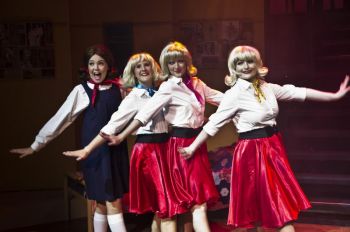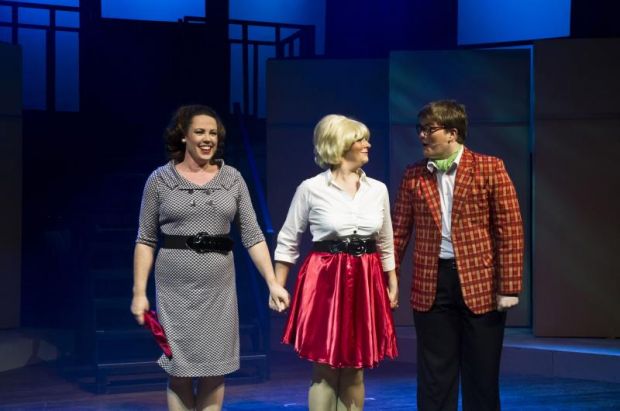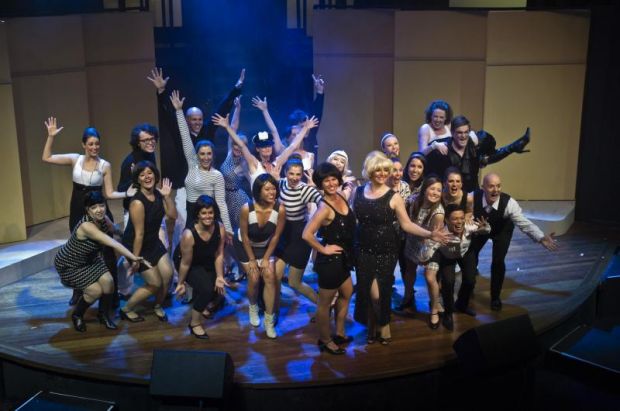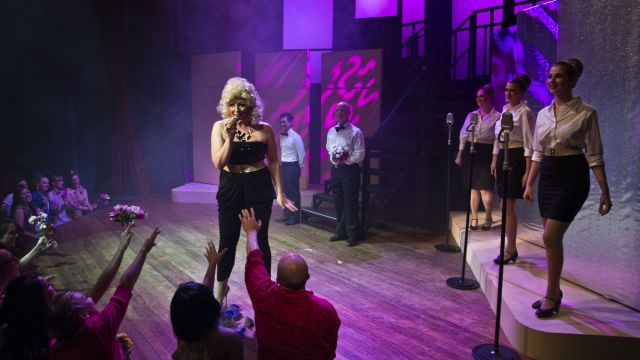Dusty The Original Pop Diva
The musical is called Dusty, it’s utterly defined by the portrayal of pop diva, and with Linda Hale in the title role it is in safe hands, both in vocals and acting. Thanks to musical director David Lang, a capable off-stage orchestra and strong back-up singers, the production boasts an effective, slightly theatricalised 60s (and later) pop sound.
Linda Hale’s energy in the musical numbers and sympathetic playing of scenes, overcoming sometimes two-dimensional writing, is the full deal, doing full justice to the pop icon.
 Chatswood’s production is blessed with lots of strong female performances, stretching through the impressive leads to Dusty’s supporting singers.
Chatswood’s production is blessed with lots of strong female performances, stretching through the impressive leads to Dusty’s supporting singers.
As Dusty’s alter-ego, the young Mary O’Brien, Gabriella Glenn is a sheer delight. In the several productions of Dusty I’ve now seen, never has the balance and interaction between the two performers been more truthful or touching. Gabriella also shines brightly in her share of the pop vocals.
More strong vocals, too, from Miriam Ramsay as Reno, the love of Dusty’s troubled life, who also finds warm supportive subtext in her scenes with Dusty.
Katherine Wall is appropriately bright and brassy as Dusty’s friend Peg, totally nailing her restricted singing opportunities.

Dusty really is a show for the women. Of all the male roles, Dusty’s high camp hairdresser / confidante Rodney is easily the strongest, and Raymond Cullen finds fun and sympathy in the role, while never going too far OTT. Rhys Gillmer does well in the thankless role of Dusty’s brother Tom, with the Springfields Medley an early, nostalgic highlight.
The roles of Dusty’s parents Mr and Mrs O’Brien, as written, are pretty stereotyped, so while Derek Ebbs and Bernadette Baran find some sympathetic moments, they’re basically pretty broad comedy. Baran’s Irish accent needs modification at times for greater clarity; Ebbs’ native Irish accent is, by contrast, consistently easier to understand.
The energy of the ensemble, back-up singers and some other nice cameos never flagged, and costuming, particularly some fabulous 60s outfits, was a scene-setting treat against relatively neutral settings.

The design concept, using six revolving panels and a central staircase, was a great solution for a tight stage, though its potential wasn’t always equalled by execution on an otherwise impressive opening night. Scene changes (probably around 40% of them, in a big show for fluid scene changes) didn’t always flow with the desired the cinematic style. Was it due to a tight bump-in or a few too many props and furniture pieces?
Ironing out this relatively minor (yet noticeable) issue will facilitate the slick production which director Fiona Kelly has obviously envisaged, allowing the splendid performances to be seen to best advantage.
When the supporting players and back-up singers get their individual shot at a solo in the mega-mix finale, you realise the depth of vocal talent assembled for this community theatre production.
Neil Litchfield
Photographer: Alan Roy.



Subscribe to our E-Newsletter, buy our latest print edition or find a Performing Arts book at Book Nook.

